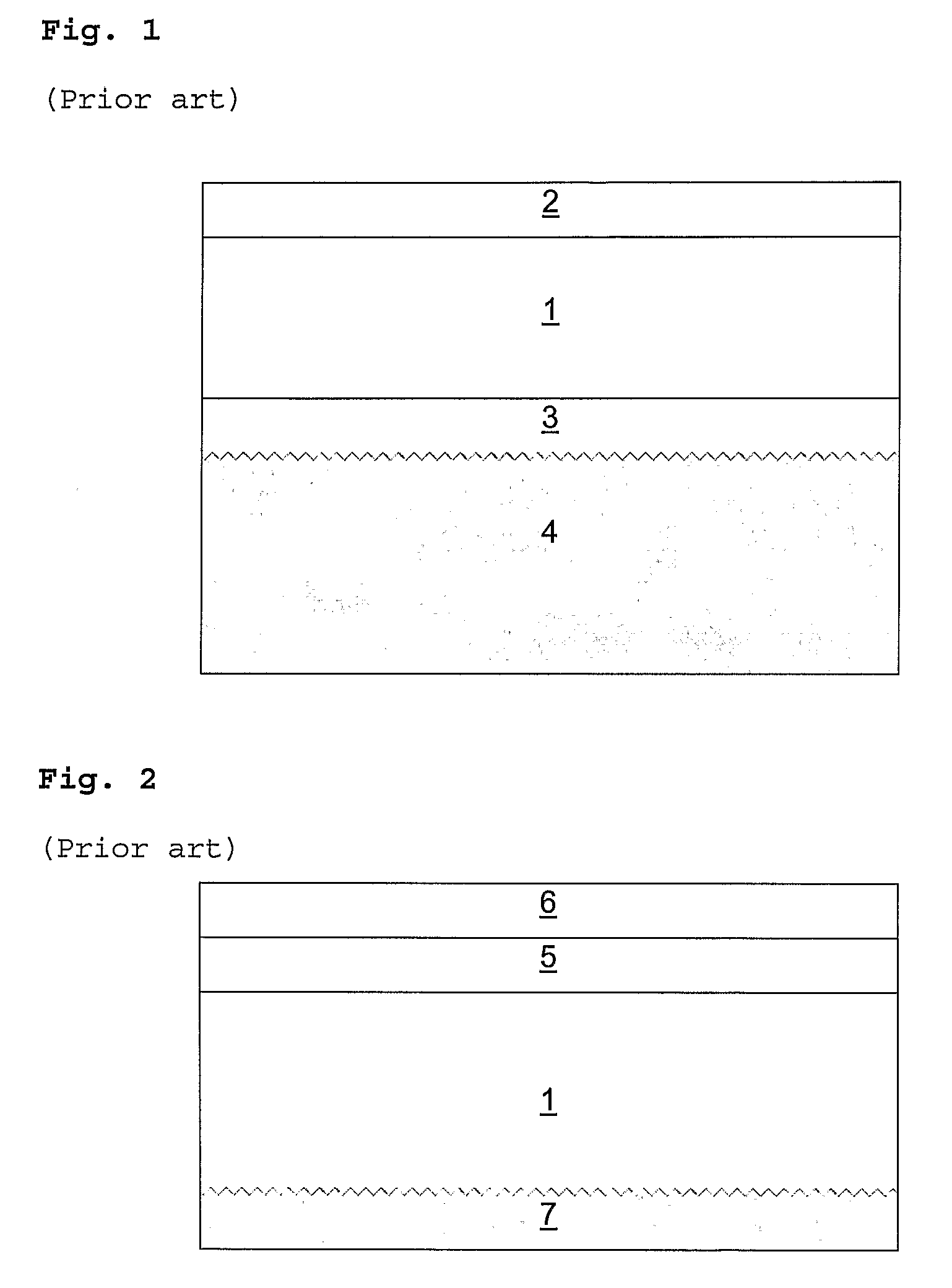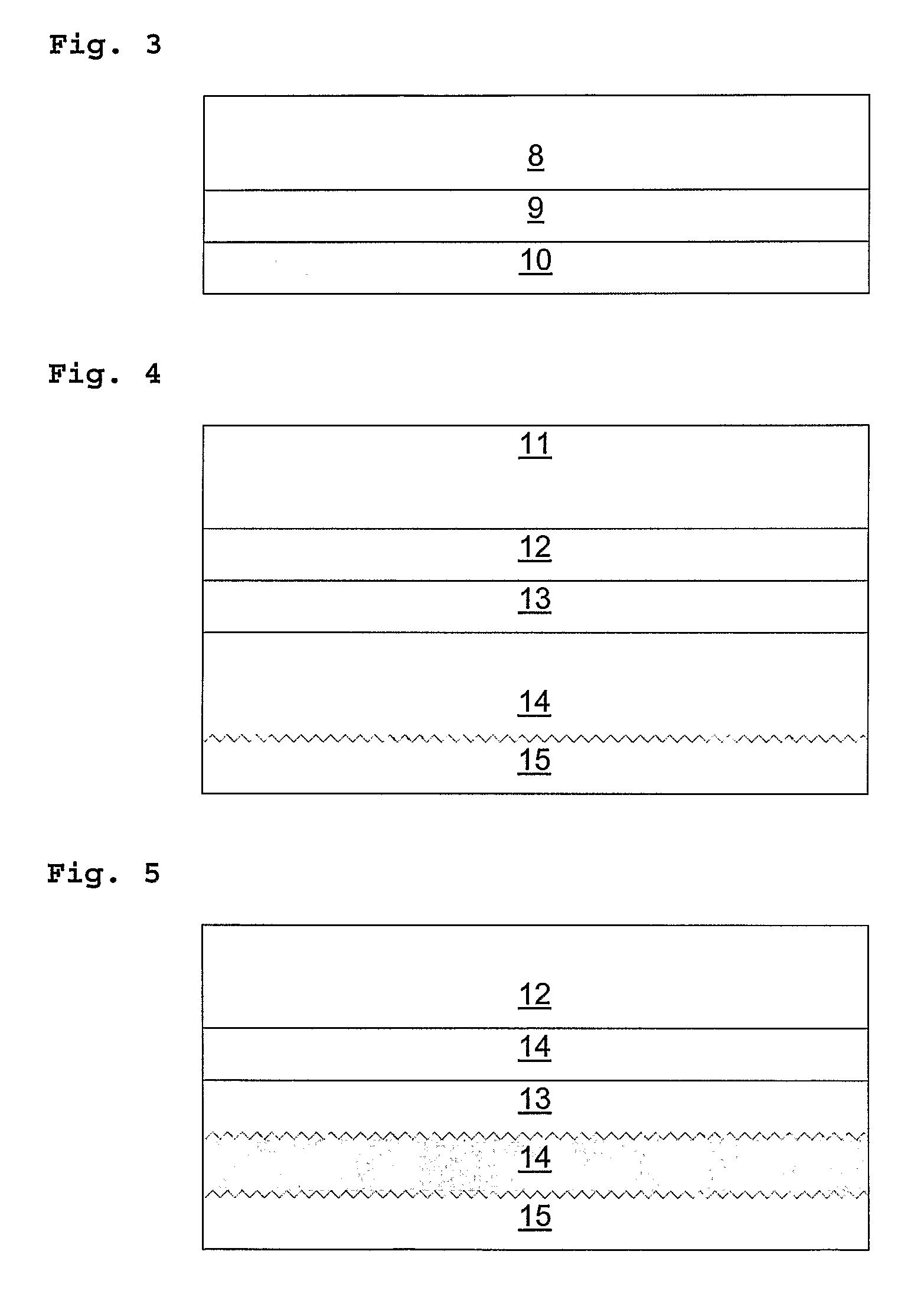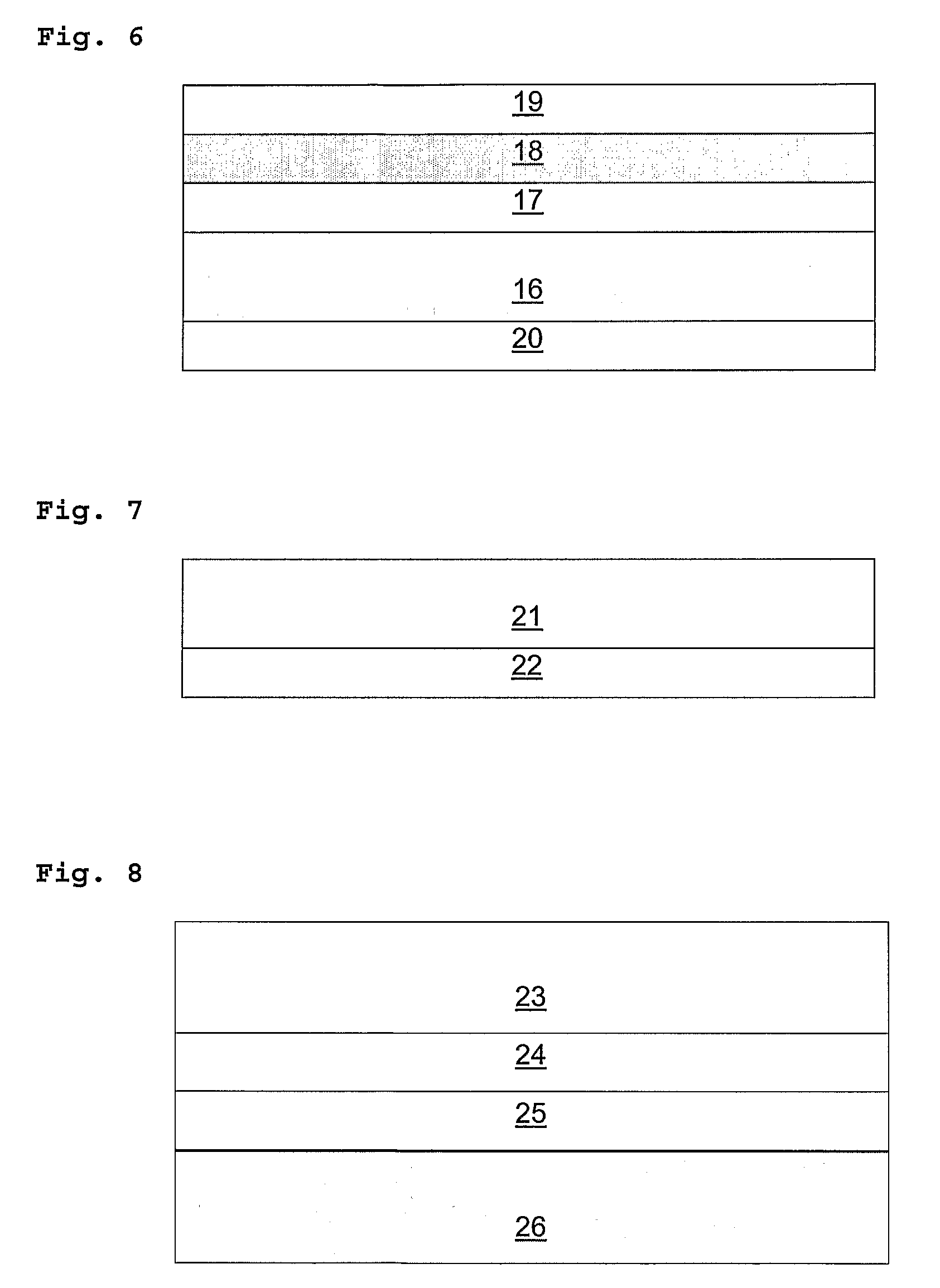Heat-sealable label
a technology of sealing labels and seals, applied in the direction of seals, identification means, instruments, etc., can solve the problems of difficult and expensive recycling or degradation of sealing lines, difficult and expensive recycling of sealing lines, and problems in incineration plants, etc., to reduce material consumption and reduce label weight.
- Summary
- Abstract
- Description
- Claims
- Application Information
AI Technical Summary
Benefits of technology
Problems solved by technology
Method used
Image
Examples
example 1
[0109]A 12μ Mylar 800 Oriented Polyester film (PETP) from DuPont Teijin Films was coated with 5 g / m2 (dry weight) of a water-based ethyl vinyl acetate copolymer dispersion (Latiseal A7734A obtained from Sovereign Speciality Chemicals, Buffalo, USA) using a gravure method. The wet dispersion was dried under an infrared lamp and a gas permeable, white, porous coating appeared. Latiseal A7734A comprises 44% (W / W) solids and water as the main liquid component. The product also comprises about 0.5% of aromatic hydrocarbon solvent. The coalescence temperature is about 70° C.
[0110]This coated film was heat sealed at 40 psi and 90° C. and 110° C., respectively, to 8 different films:
[0111]Film 1: 30 μm Radil C Mono BOPP film manufactured by Radicifilm, Italy.
[0112]Film 2: Laminate of 30 μm Bicor MB 400 and 40 μm LLDPE Marked PAELLA, manufactured by Neoplex, Nyborg Denmark.
[0113]Film 3: Laminate of 30 μm Bicor MB 440 and 35 μm LLDPE, Marked IGLO, manufactured by Neoplex, Nyborg Denmark.
[0114]...
example 2
[0121]A 30 μm BICOR MB 400 BOPP film from Exxon / Mobil Chemicals was coated with 5 g / m2 (dry weight) of a water-based ethyl vinyl acetate copolymer dispersion (Latiseal A7734A, obtained from Sovereign Speciality Chemicals, USA) using a gravure method. The wet dispersion was dried under an infrared lamp and a gas permeable, white, porous coating appeared.
[0122]The coated film was heat-sealed at 40 psi and at the temperature indicated in table II to the list of films indicated in example 1. The temperature treated sandwich was allowed to cool to room temperature and sliced onto strips of 15 mm. The adhesion between the films was measured as the force expressed in gram needed to separate the films according to DIN 53357.
[0123]The data obtained is indicated in the table II below:
TABLE II90° C.110° C.120° C.130° C.(g / 15 mm)(g / 15 mm)(g / 15 mm)(g / 15 mm)Film 14065120140Film 270170—220Film 3120300——Film 4300450——Film 5————Film 6430500——Film 7130180200230Film 8450540
example 3
[0124]A 12μ Mylar 800 Oriented Polyester film (PETP) from DuPont Teijin Films was printed with a white ink (Torda inks RPW White 015, obtained from Torda Inks, Lund, Sweden) and subsequently coated with 5 g / m2 (dry weight) of a water-based ethyl vinyl acetate copolymer dispersion (Latiseal B7089AN obtained from Sovereign Speciality Chemicals, USA) using a gravure method. The wet dispersion was dried under an infra-red lamp and a gas permeable, white, porous coating appeared. Latiseal B7089AN comprises a solids content of 37.0% (W / W) and water as the main liquid component. The product also comprises about 0.5% of aromatic hydrocarbon solvent. The coalescence temperature is about 71° C.
[0125]This coated film was heatsealed at 40 psi and various temperatures as indicated in table III below:
TABLE III110° C.120° C.130° C.(g / 15 mm)(g / 15 mm)(g / 15 mm)Film 1170—470Film 2170250—
PUM
| Property | Measurement | Unit |
|---|---|---|
| Temperature | aaaaa | aaaaa |
| Temperature | aaaaa | aaaaa |
| Temperature | aaaaa | aaaaa |
Abstract
Description
Claims
Application Information
 Login to view more
Login to view more - R&D Engineer
- R&D Manager
- IP Professional
- Industry Leading Data Capabilities
- Powerful AI technology
- Patent DNA Extraction
Browse by: Latest US Patents, China's latest patents, Technical Efficacy Thesaurus, Application Domain, Technology Topic.
© 2024 PatSnap. All rights reserved.Legal|Privacy policy|Modern Slavery Act Transparency Statement|Sitemap



